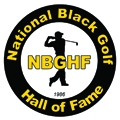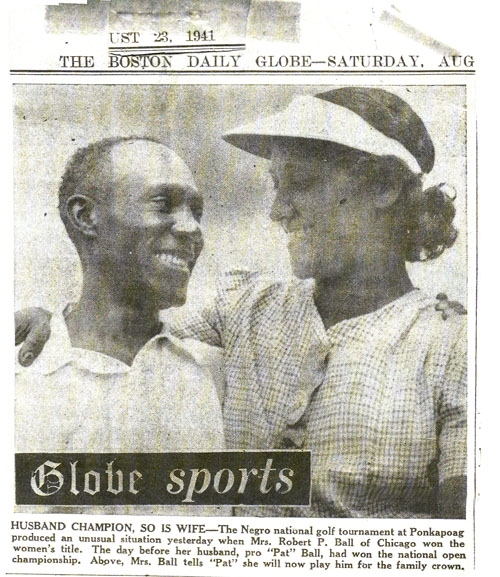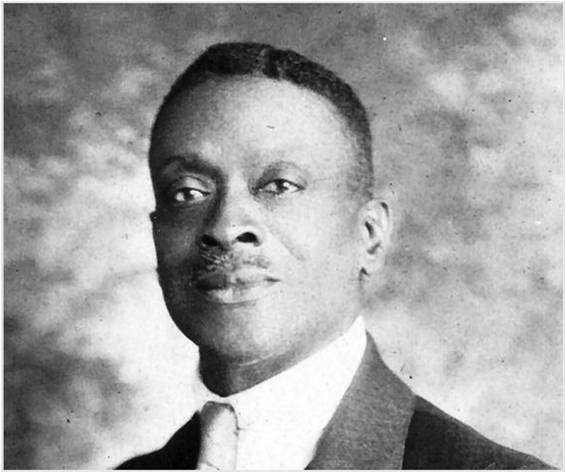 The National Black Golf Hall of Fame (NBGHOF) honors Black Golf Pioneers and Trailblazers throughout Black History Month
The National Black Golf Hall of Fame (NBGHOF) honors Black Golf Pioneers and Trailblazers throughout Black History Month
ROBERT “PAT” BALL
Robert ‘Pat’ Ball was a four-time champion of the United Golfers Association (UGA) Open Championship. He won his fourth and final ‘Negro National Open’ in September 1941 at Pankapoag Golf Course, in Massachusetts with a 72-hole score of 302. Following the victory a journalist for the Chicago Defender wrote:
“The stories of Pat Ball and Negro golf are just about one in the same thing. He has missed only one of the 16 championships and he had won in 1927 at Stow with 293, in 1929 at Westfield, NJ with 290 and at Detroit in 1934 with 296. He finished second on two other occasions. None in his race can match his record – or his phenomenal ability with his chipping iron.”
Robert ‘Pat’ Ball was born in 1898, in Atlanta, GA. He learned the game by working as a caddie. One of the persons he often caddied for was Bobby Jones, regarded as one of the greatest golf champions of all time, and a World Golf Hall of Fame member. Past articles likened the rhythmic, silky smooth golf swing of Pat Ball to Bobby Jones, as well as his expert shot-making abilities.
Ball migrated to Chicago prior to his 20th birthday, where he immediately established himself as an elite player. He won the prestigious Cook County Amateur golf championship, becoming the first person of color to win the title. When the UGA tour officially formed and held its first championship in 1926, it provided aspiring players like Ball with an opportunity to display their talents and pursue golf as a profession. For the next decade he was the most dominant male golf professional on the UGA tour and across the United States, winning three Negro National Open titles and finishing second twice. Throughout this time, Pat Ball and his followers believed he could have been just as dominant a player on the PGA tour, but he was never given a chance because he was Black.
Twice he challenged the White golf establishment. On one occasion his entry fee into a major golf tournament was accepted, then later returned when tournament officials learned he was Black. The other incident is best described by Dr. Calvin Sinnette, in his book Forbidden Fairways:
“Robert ‘Pat’ Ball and his playing companion, Elmer Stou of Bellview, New Jersey, took legal action after being disqualified from playing in a 1928 National Public Links tournament in Philadelphia. Sponsored by the USGA, the tournament was in its third day before the pair was disqualified. With the help of legal counsel, the two men successfully obtained a temporary injunction that prevented the tournament from proceeding. When USGA officials realized that the tournament could not resume, they reinstated Ball and Stout. Realizing that they were not welcome, but having proved their point, the two men withdrew.”
Ball was 43 years old by the time he won his fourth title in 1941, and his best days as a competitive golfer were behind him. By then he had been appointed Head Golf Professional and instructor at Palos Park Golf Club, and affluent community in southwestern Cook County, Illinois. Individuals from all races came to him for golf lessons, but his favorite student was his wife. Cleo Ball won the National Negro Open female division in 1941, the same year Pat Ball won his fourth and final UGA title. They are the only husband and wife UGA champions in the history of the tour.
He served as Head Pro at Palos Park for two years. Afterwards, he owned an indoor golf school on 42nd and Michigan, in the heart of the Southside of Chicago. He was good friends with Walter and Neddie Speedy, known by many as the mother and father of Black golf. Together, they helped promote and grow the game of golf. Lessons, tournaments and social activities flowed through the Windy City Golf Association and the Chicago Women’s Golf Club, and Pat Ball and Mr. & Mrs. Speedy were champions for the cause.
In 1954 members of the Windy City Golf Association named Pat Ball an honorary member for life. He died in Chicago, IL in late September 1961.
Only four other men have ever won the National Negro Open four or more times. The others are Howard Wheeler, Lee Elder, Teddy Rhodes and Charlie Sifford. All of them were inducted into the National Black Golf Hall of Fame in the inaugural 1986 ceremony. In 2015, Robert “Pat” Ball was inducted into the National Black Golf Hall of Fame, too, taking his rightful place alongside the other legends of the UGA, and the game of golf.
Credits to the Chicago Defender, Pete McDaniel, author of Uneven Lies, Dr. Calvin Sinnette, author of Forbidden Fairways, and the National Black Golf Hall of Fame. Photo courtesy: Ramona Harriet, author of A Missing Link In History.
Visit the website for more information about the National Black Golf Hall of Fame




